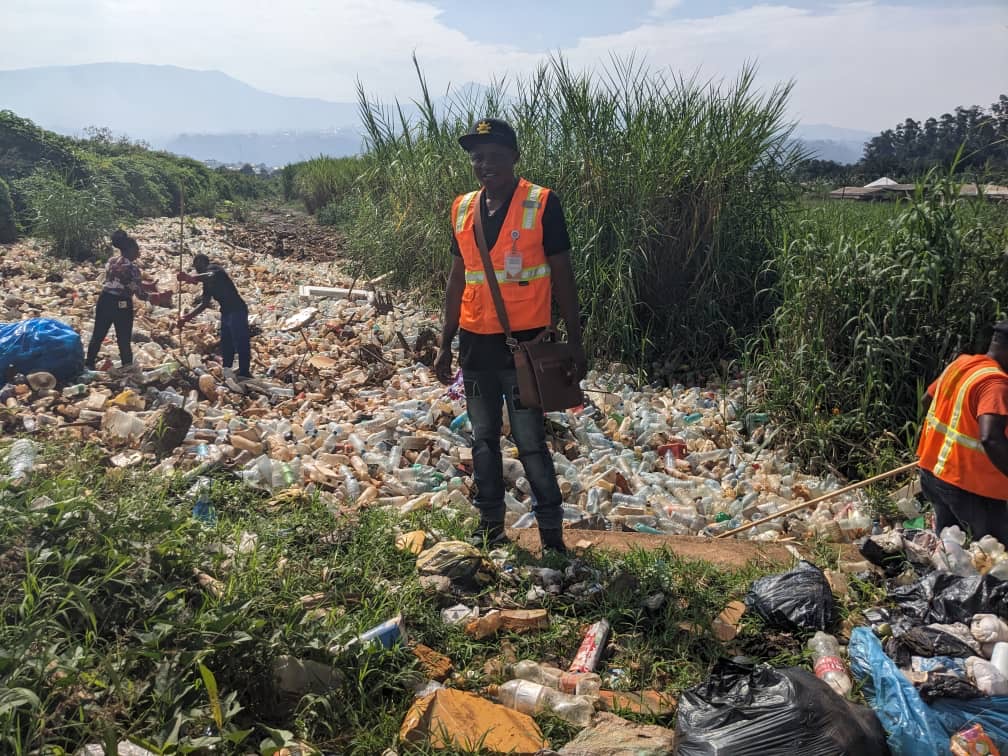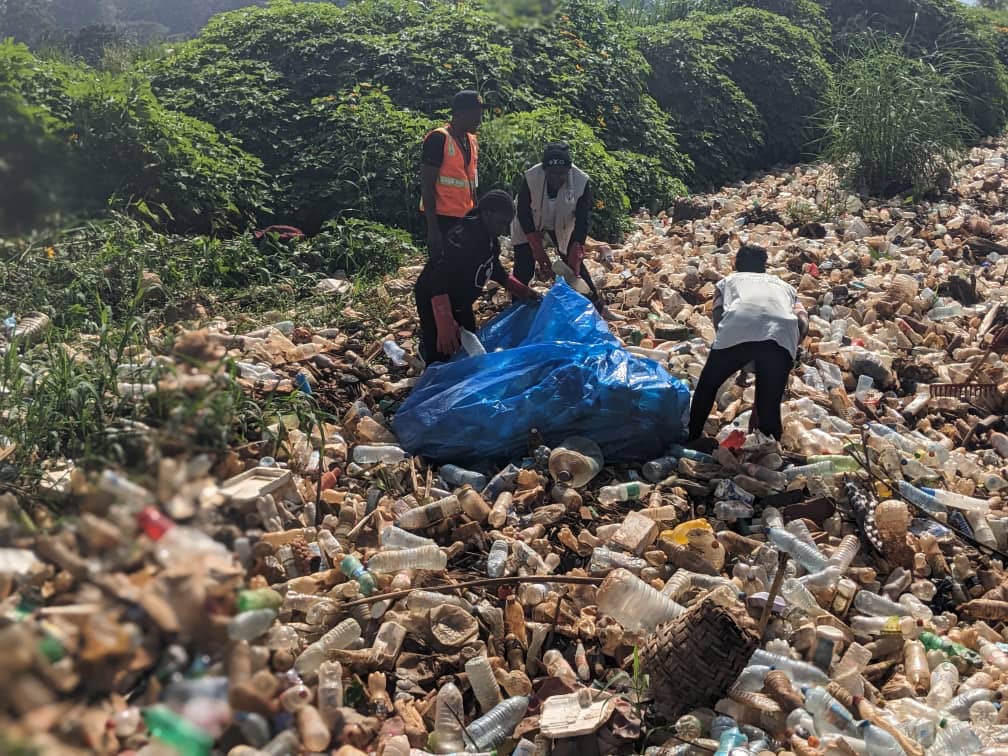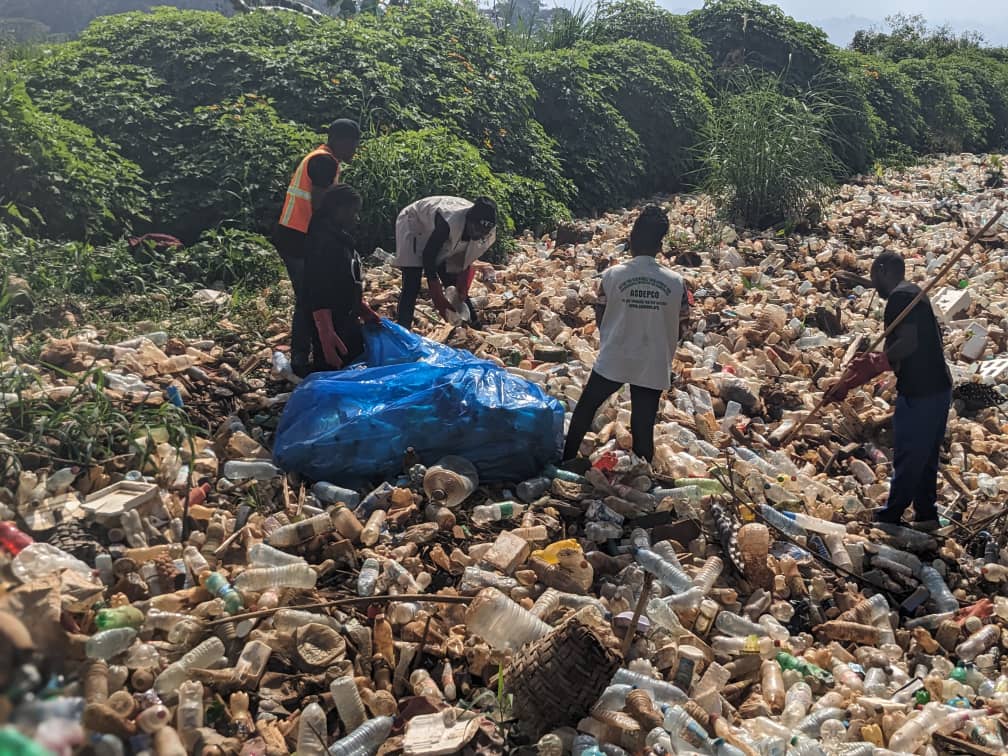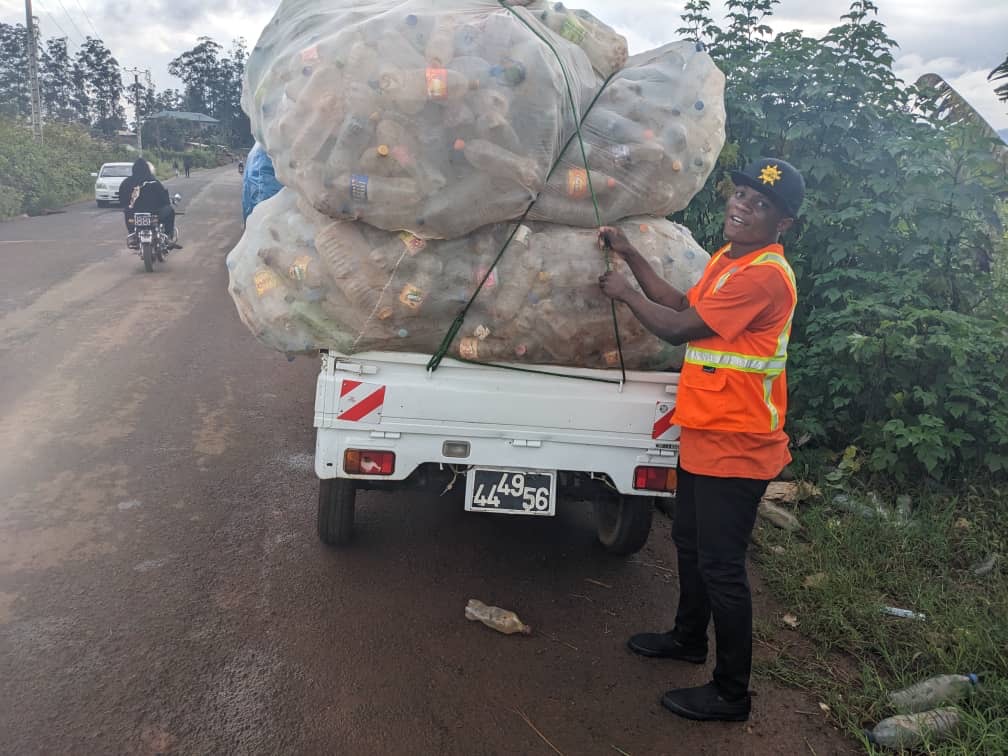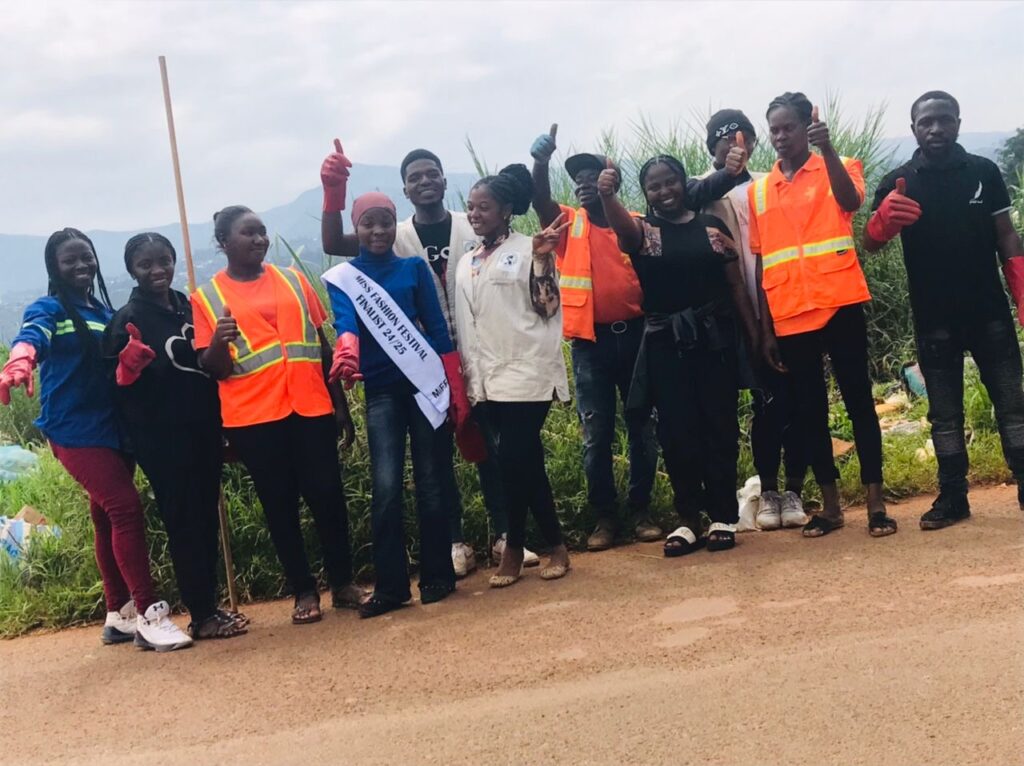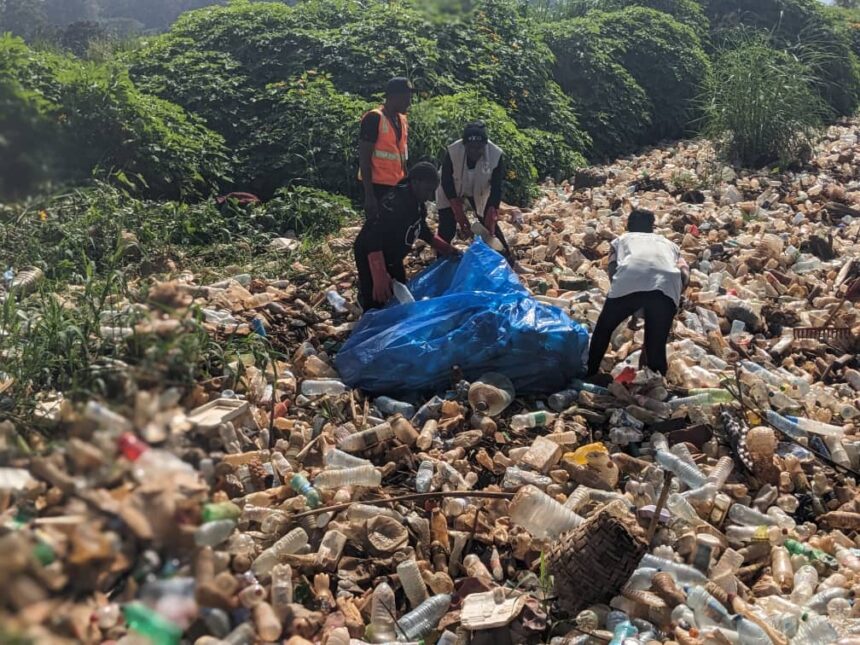Climate change and environmental protection have been at the center of most international and
local discussions, especially after the Paris Agreement 2015. Plastic pollution has been identified
as one of the drivers of climate change and environmental degradation globally, particularly in
Cameroon. Like many urban centers in Cameroon, Bamenda faces significant environmental
challenges due to rapid urbanization and inadequate waste management systems.
Plastic waste, in particular, has become a problem that requires much-needed attention, with
plastic bags, bottles, and other single-use items littering streets, waterways, and landscapes in
most cities in Cameroon and Bamenda inclusive. This poor waste management poses health risks
to humans and wildlife in the communities of Bamenda. The increase in plastic pollution in the
communities of Bamenda can be associated with limited knowledge of the impacts of plastic
waste on the environment/communities, Lack of waste management infrastructure, Poor disposal
of plastic waste habits, and Ineffective policies and legislation. The effect of this poor waste
management has been devastating on communities, resulting in Pollution, Flooding, Destruction
of the ecosystem and natural resources, and Diseases. this has thus increased the need for urgent
action to remedy the situation. Given that environmental protection is not a one-man thing, given
that it affects all, it, therefore, requires collective action from all actors to effectively address
environmental protection, especially climate change, which is associated with plastic pollution as
part of BLP’s environmental sustainability program and as part of its project titled “Promoting
sustainable waste management and economic opportunity through plastic recycling in Bamenda,
Cameroon, and Makeni, Sierra Leone”, bright light projects with Partners (ASDEPCO and The
GREENS) have been engaged in series of activities and outreach programs aimed at enhancing
environmental protection in the Bamenda, northwest region of Cameroon.
Bright Light Projects and partners have thus collaborated on several initiatives, including
research, advocacy, awareness, community engagement, and support for local actions to protect
our environment. This aligns with international environmental agreements and Cameroon’s
Long-term development goals in fostering sustainable development.
One key activity that the organization has been engaged in related to environmental protection
has been plastic cleanup campaign programs.
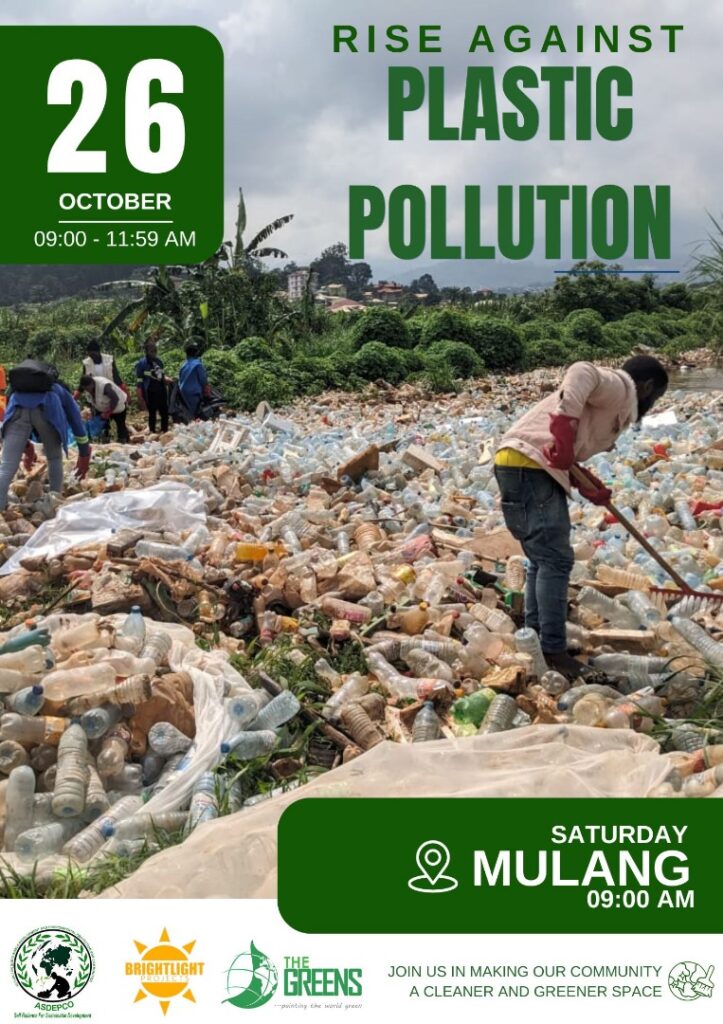
On this note, on the 26 th of October 2024, Bright Light Projects and partners carried out a
cleanup campaign at the Mulang stream to remove many plastic containers from the Mulang
water channel. We collected thousands of plastic containers that were removed and transported to
the shredding side to start reducing, recycling, and reusing plastics. This aimed to reduce plastic
pollution in the water channel at Mulang, improve water quality, protect aquatic life, and protect
environmental protection. It was also intended to reduce water plastic waste in the water channel
by encouraging the Mulang community to adopt sustainable practices such as recycling, reusing,
and reducing plastic use to reduce the impact of poor waste management, especially plastic
pollution such as floods and drought.
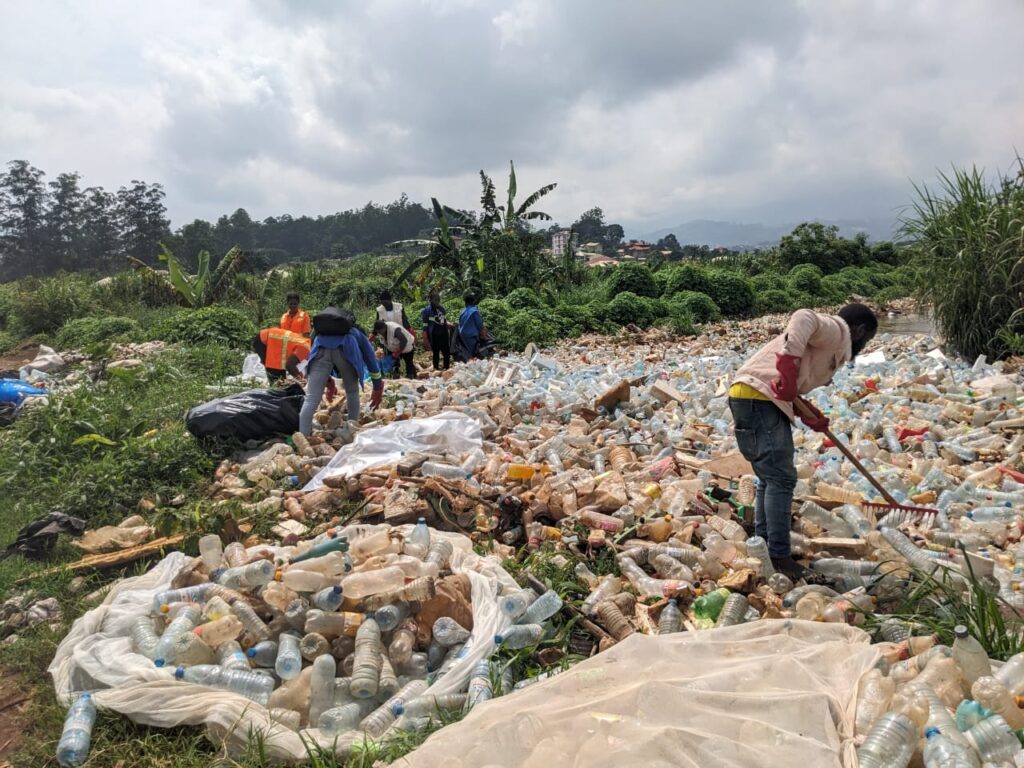
Members of both organizations and university students from the University of Bamenda attended
the outreach activity highly. In addition to removing plastics, participants were educated on
environmental protection best practices and called upon to take the message to their peers and
families while ensuring that they were taught by example. The activity ended with transporting
the plastics to the shredding site for recycling.
In the course of the activity, the participants faced several challenges, including but not limited to
the risk of injury from hazardous materials and sharp objects, the depth of the river, which
paused as a threat to participants, exposure to waterborne diseases from the waste, Limited
community participation difficulties in tracking progress or measuring impact due to the increase
in the volume of trash in the river even after the activity.
With the present challenges in carrying out this activity, there is a need for resources to be able to
conduct thorough risk assessments and provide safety training for participants, procure first aid
kit for emergency response, engage local communities through outreach and education programs,
and also collaborate with local leaders, develop strategies for handling hazardous materials or
toxic substances, while also providing clear communication, training, and support for volunteers
(recognize and reward volunteer contributions). The team believes that if this is done, it will go a
long way in facilitating the activities and, as a result, fostering environmental protection within
the region.
